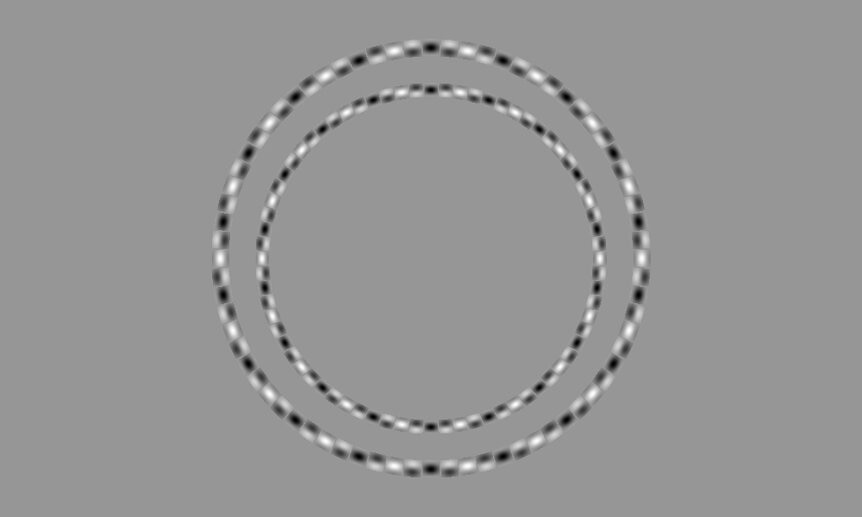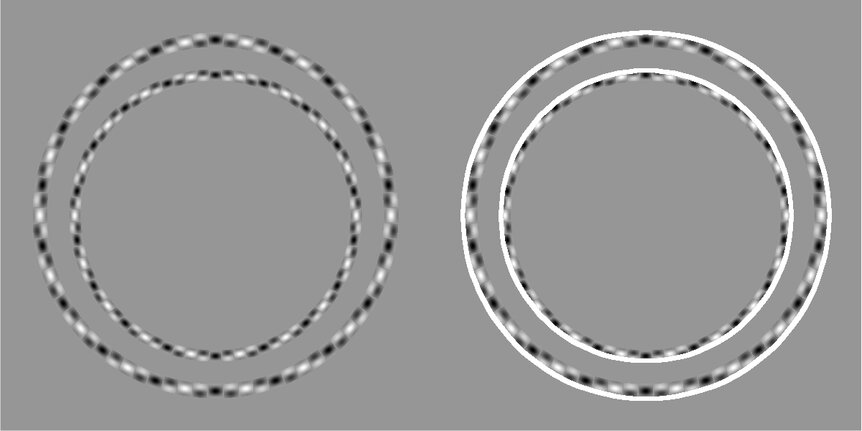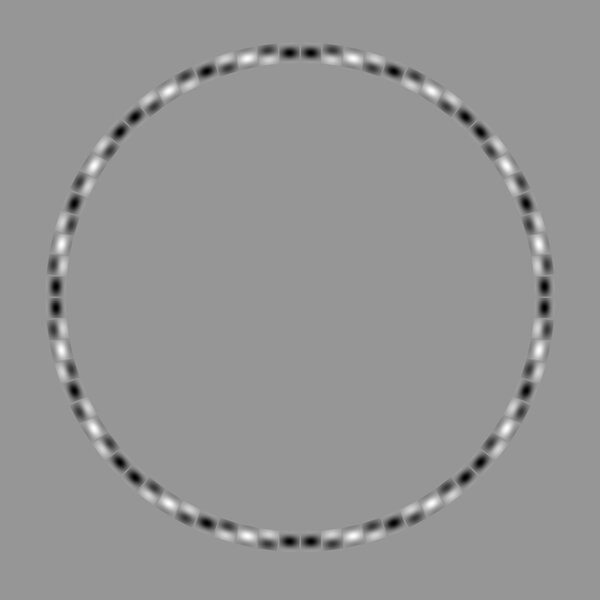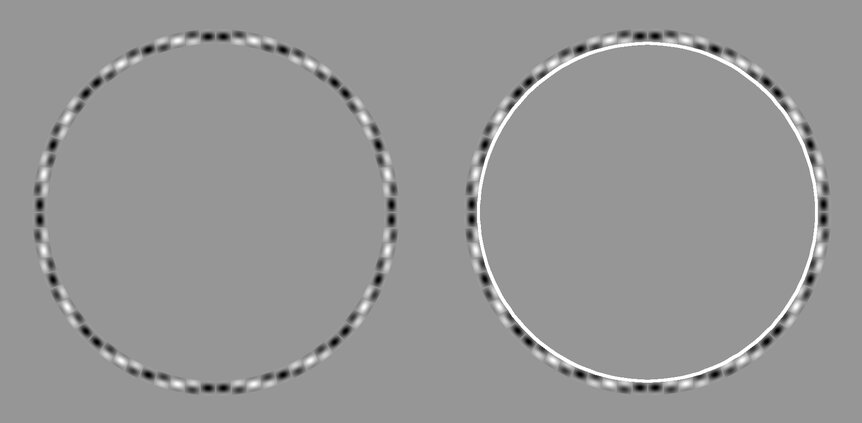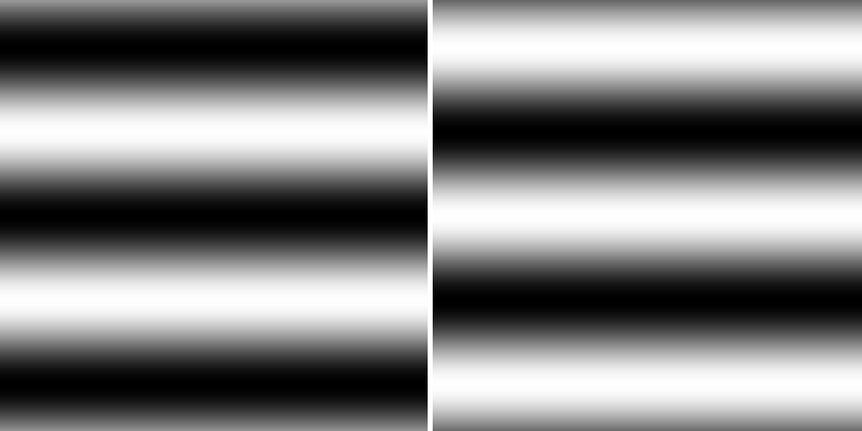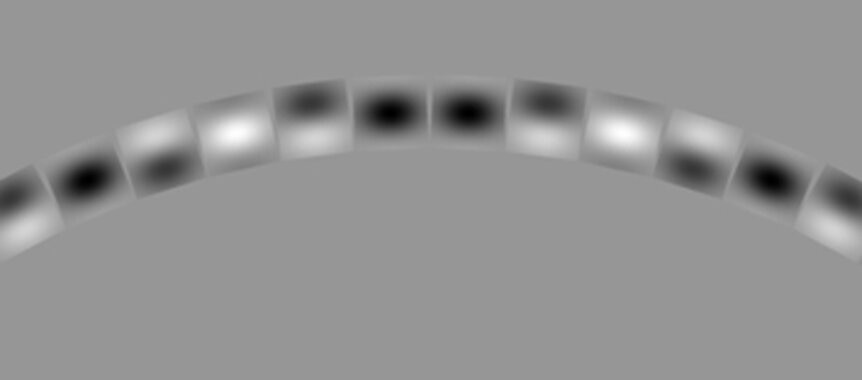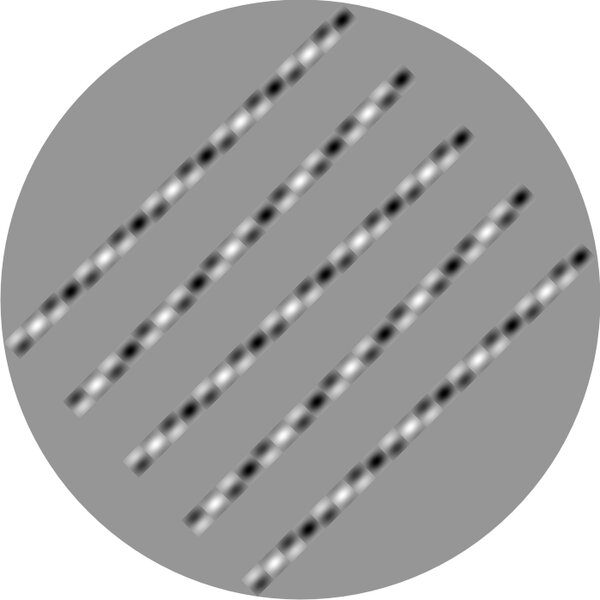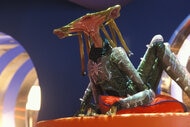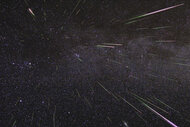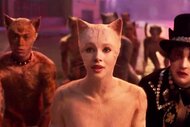Create a free profile to get unlimited access to exclusive videos, sweepstakes, and more!
Can you make your brain *not* see this circle illusion?
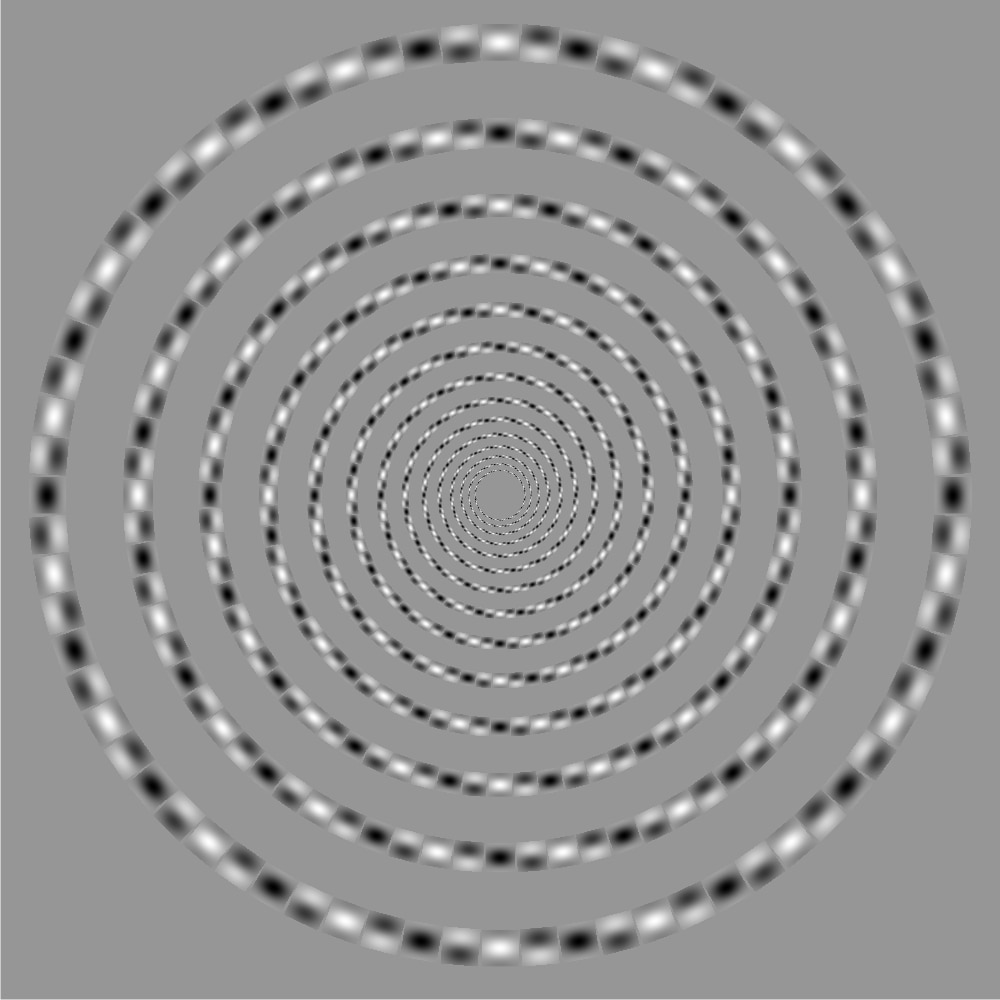
I have two warnings for you about this article: One is that it’s possible the images displayed here will make you feel a bit dizzy, even nauseated. I’m serious; if that happens, you might want to close the page.
The other is that I’m about to destroy your brain. Fairly warned be ye, says I.
It’s been a while since I’ve written about a mind-melting optical illusion, and oh, my, do I have a good one for you today. Are you ready?
Take a good look at that image, if you can. Every time I do, my brain tries to leap out of my head.
When you look at one part of the image, it almost appears as if the other parts are changing. The shape shifts, and it’s almost as if parts of the structure disappear, like falling into your eye’s blind spot.
But here’s the amazing part: What you’re seeing are two concentric circles.
It’s true! Here, check out this side-by-side comparison:
I took the original image and used Photoshop to simply draw circles in the image. See! They really are circles, and they really are concentric. If you don’t believe me, then try it for yourself; use software like Photoshop or Gimp and draw circles, or hold up something circular to your monitor. As much as your brain tells you otherwise, these really are two nested circles.
This illusion works for a single circle as well:
That really is a circle, and not a rounded square! Again, check the side-by-side comparison I made:
Whoa. This is a killer illusion, and it’s astonishingly persistent. Some illusions you can look at and concentrate and see “around” them, getting past the distortion, but in this case it’s incredibly difficult.
So, what’s going on here?
These images were created by one of the world’s leading illusion creators, Akiyoshi Kitaoka. Kitaoka calls this the Popple illusion, after Ariella Popple, a psychiatrist who studied it (more on this below), and he has lots of examples of it.
As you can see, the circles are made of small, roughly square-shaped patches. These are called Gabor patches, and each is a small image that has a series of alternating lines of brightness. But it’s more than that: The brightness in each patch goes up and down in a wave so that the lines appear fuzzy. The brightness peaks in the center of the bright line, and is at a minimum in the center of the dark line. If you want to get technical, if you took a cross section of the patch and graphed it, it would be a sine wave.
Gabor patches can be varied; the separation between the lines (the frequency) can be bigger or smaller, the lines can be angled, and more. Most importantly, you can change the phase: where the lines fall in the patch. Changing the phase means the lines get shifted parallel to their length. So a phase of, say, 0, means the brightest line is in the middle of the patch, and a phase of 0.5 shifts it so that the darkest line is in the middle. There are online Gabor patch generators; go and play with them if you’d like!
And this is the key to the illusion. By making a circle out of Gabor patches, and changing the phase in each patch, your eye tries to follow both the changing shading pattern from patch to patch as well as the overall shape distribution (in this case, a big circle) of the patches themselves. In fact, they push and pull on your interpretation: Where the black lines appear to curve along with the overall curve of the circle (say, both convex), the pattern you see appears bent more; where the black lines bend in the opposite sense (concave versus convex) you perceive the circle to be flatter.
These patterns have been studied by Popple and her coauthor, Dennis Levi. They showed that the amount of distortion you perceive changes with the phase change and angles between each successive patch. In some cases, even parallel lines can look severely tilted. It’s brain-melting. With circles, the bending gets even more intense, and wraps your brain around itself trying to make sense of what it’s seeing.
But this is more than just a fun illusion. In the study I mentioned, they used this illusion to see how well your eye and brain take in information over an area, and not just one specific spot in your vision field. They found that your eye integrates (combines) the information from an area of about 10° in the center of your view. That’s interesting, and in fact I stumbled on this general idea myself; I find that if I move away from the drawing the illusion is very strong, but if I get very close to it, locally I perceive the overall curve to be less distorted. That’s amazing, if a bit disconcerting.
Want more? This one actually made me feel a little woozy trying to follow the pattern:
Yup. Those aren’t spirals. They’re all concentric circles. Use your mouse to trace one and you’ll see. They don’t spiral in at all, but the Gabor patches (set up so the brightnesses are distributed in a broken spiral pattern) force your eye to think they do.
I love optical illusions, for three main reasons. One is that they’re just so much fun! It’s amazing both to try to figure them out as well as let yourself be fooled by them.
Second, the science behind them is fascinating. The way our eyes see, the way those signals are sent to the brain, the way our brain interprets them ... all of this shows how complex our sensory system is, and how messed up it is at the same time.
And third, these kind of illusions make it plainly obvious just how easy it is to completely fool our senses into thinking something is there when it isn’t! I can’t stress this enough: How many times have you heard someone say, “Seeing is believing?”
But it really, really isn’t.
Everything you see is filtered through a series of complex layers of perception, and is distorted in some way at each step. By the time your brain thinks it has a hold on reality, what it’s really grasping is a phantom. Nothing is really as it appears, but we have evolved over millions of years to be able to interpret these signals sufficiently to function, to see the world imperfectly but well enough to be able to live in it.
This is yet another reason science is so powerful. It allows us to find and analyze these misperceptions, to understand them, and, hopefully, to compensate for them. One of the most important messages of science is that we are very easily fooled, and if we ever hope to understand the Universe, we must keep that always in mind as we study it.
